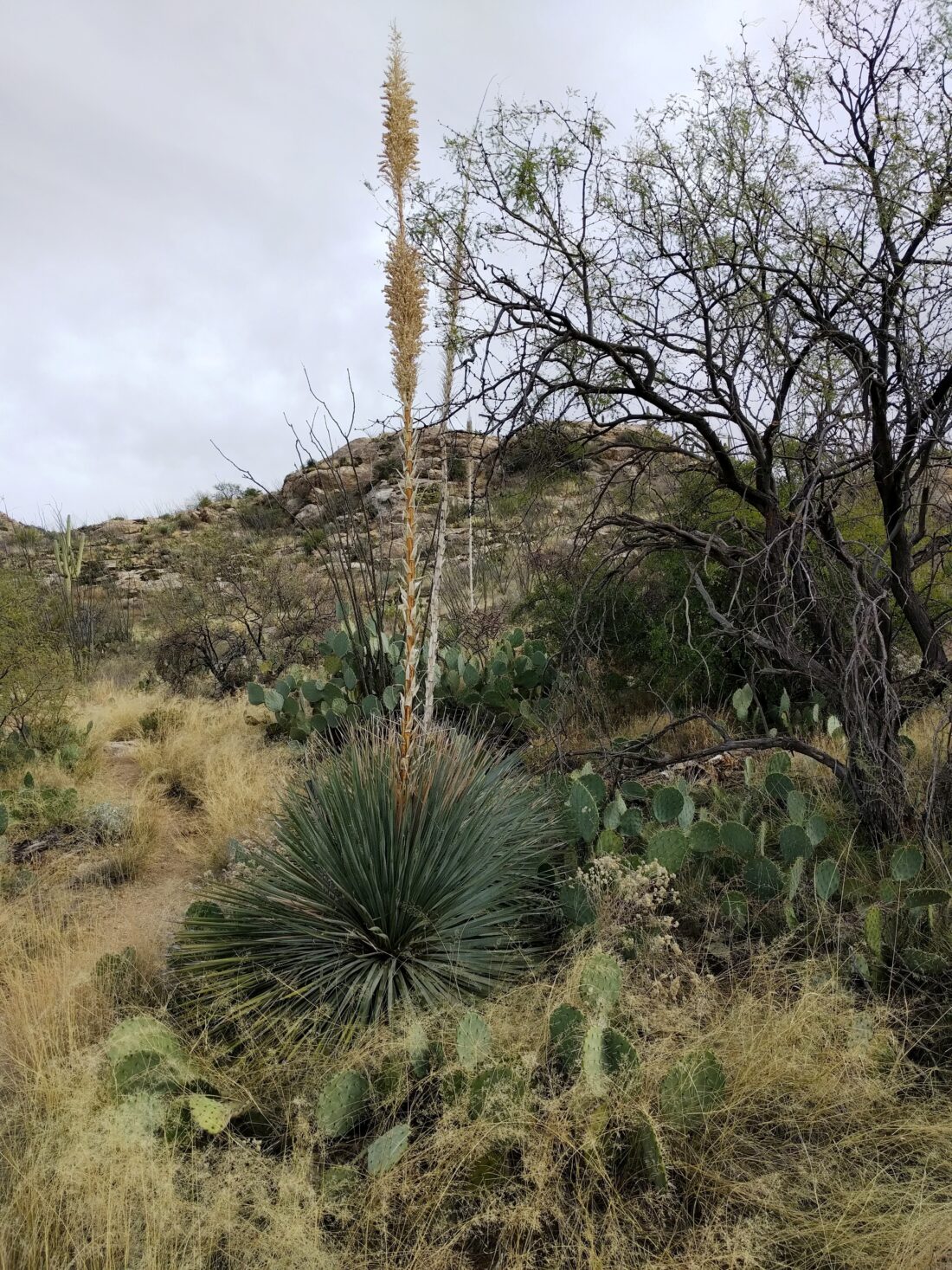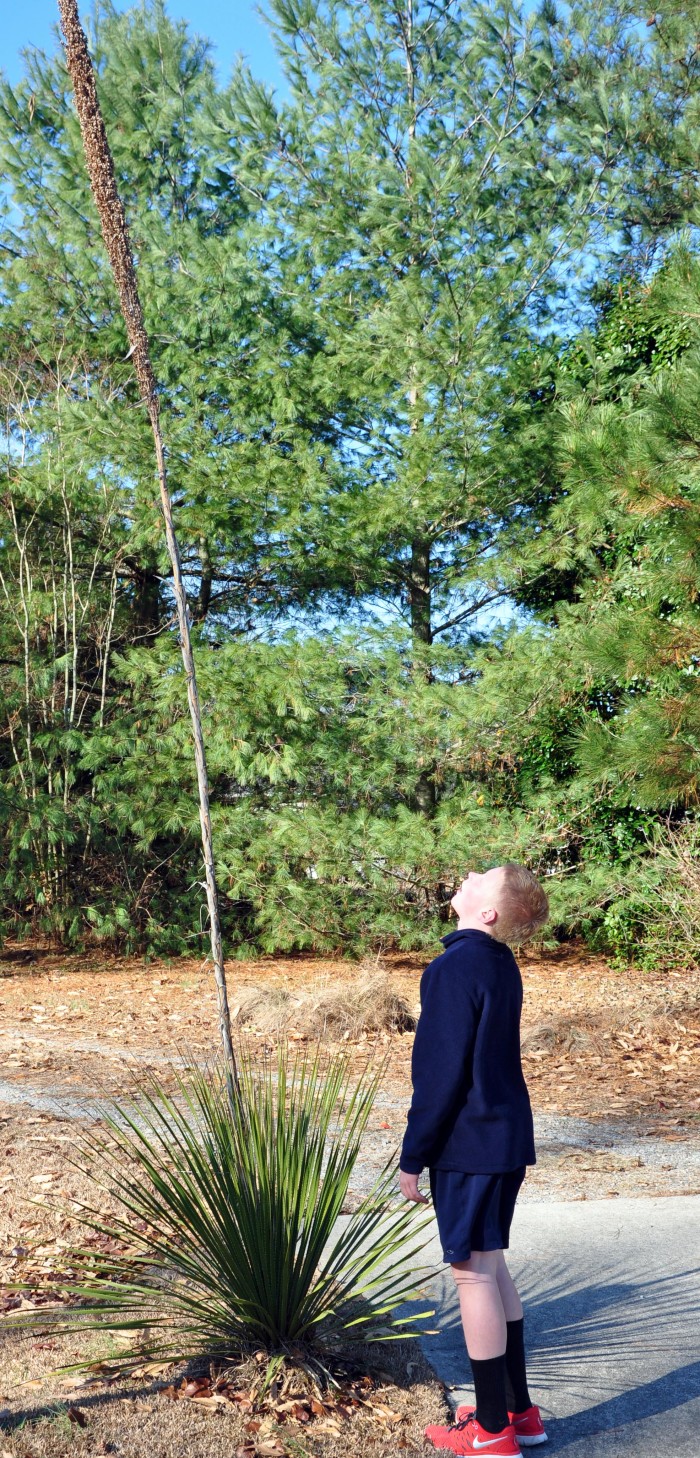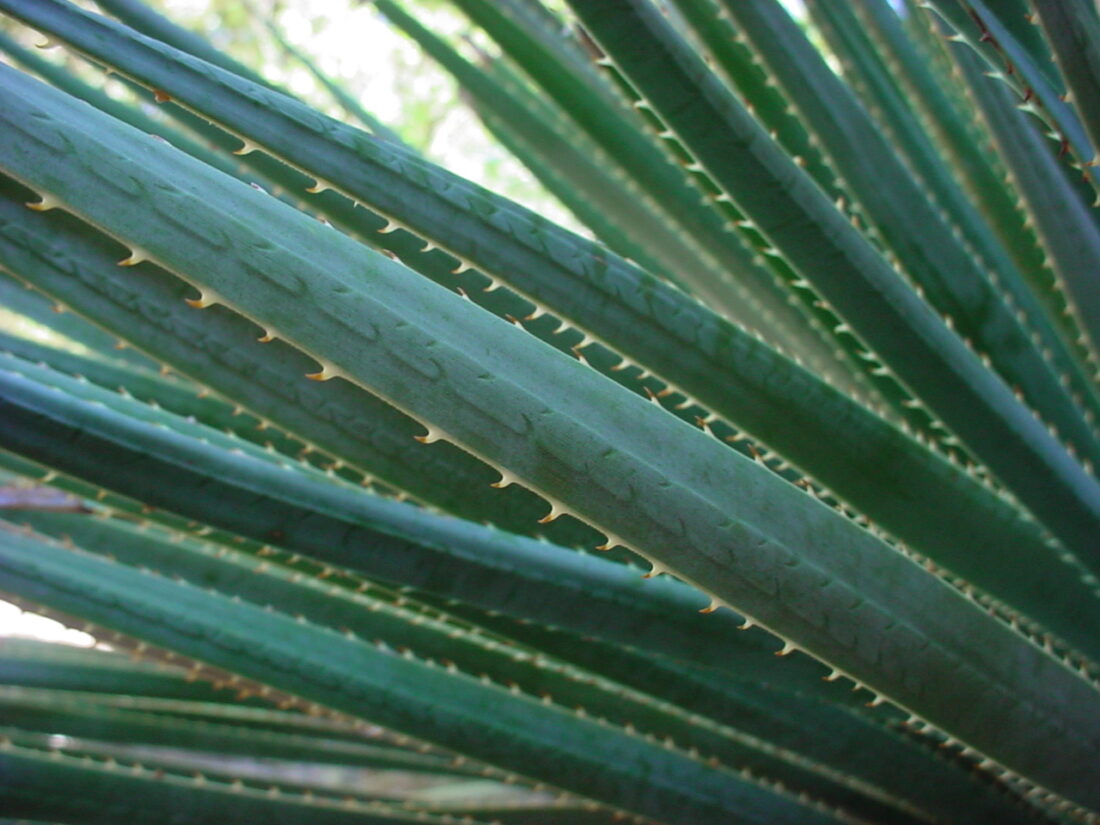I trust that you had a wonderful Thanksgiving. We loaded up our car Tuesday night and departed Maine for North Carolina at 4 a.m. on Wednesday morning. It was a long drive, but our kids were great—no small feat considering we were covering over 1,000 miles in a single day. We finally rolled into my mother’s driveway outside of Raleigh around 11:30 Wednesday night, road-weary but glad to be there.
Of course, seeing family was wonderful, but I had another reason for my excitement. Beside my mother’s driveway, standing tall and proud, was a plant I had planted over 15 years ago—a Dasylirion wheeleri, or Wheeler’s blue sotol, in full, spectacular bloom. I had placed it by her mailbox, a spot where little else seemed to thrive. But I had a hunch this desert native might appreciate the tough love. Back in the late ’90s, when I worked at Plant Delights Nursery, I noticed several large Dasylirion thriving right along the road in a dry ditch bank—a harsh spot by any gardener’s standards. That gave me the idea to try it in my mom’s similarly stubborn patch of soil.

Ok, I’m getting to the exciting part—you should see this thing in flower! The flower stalk is at least 15 feet tall, towering like a botanical skyscraper beside the driveway. The photo above shows our son, Alex, standing next to it, staring up in awe. It’s hard not to be impressed by a plant that looks like it’s trying to touch the sky.

Dasylirion wheeleri – The Blue Sotol Plant
Dasylirion wheeleri is native to the arid landscapes of the southwestern United States, from Arizona to Texas, where it thrives in rocky, well-drained soils. Yet, here it was, thriving in the humid, sometimes unpredictable climate of North Carolina. The plant itself forms a symmetrical rosette of blue-gray, serrated leaves, each about 2 feet long and 1-2 inches wide. The sharp spines along the leaf margins give away its family ties to agave, though sotol carries a lighter, more refined appearance compared to its spikier cousin. Despite its delicate, almost ornamental look, this plant is tough as nails—it laughs in the face of drought and demands full sun to truly shine.
The flowering process of Dasylirion wheeleri is an event in itself. The towering flower spike emerges from the center of the rosette, pushing upward like a slow-motion firework. Covered in tiny, cream-colored flowers, the stalk becomes a magnet for pollinators. Bees, butterflies, and even hummingbirds can’t resist the allure. It’s not just a visual spectacle; it’s an ecological one.

I must admit that the success of this plant in my mom’s garden inspired me to try my luck further north. This past summer, I bought a Dasylirion wheeleri for the gardens at Coastal Maine Botanical Gardens. Now, I’m fully aware that the chances of it surviving our brutal Maine winters are slim. But gardeners are nothing if not optimistic. If we can source a cold-hardy provenance—perhaps from a population growing at higher elevations—it might just stand a chance. For now, we’re bulking ours up in the greenhouse, giving it a few years to develop a strong root system before we dare plant it outside. I suspect it may find better luck along Long Island, where winters are milder.
If any northern gardeners have managed to coax this desert beauty through a winter or two, I’d love to hear your stories. Sometimes, the most rewarding plants are the ones that challenge us the most, and I’m hoping to give this royal sotol a throne in our northern gardens.
-Rodney
Photos: Rodney Eason, Western New Mexico University, Plants Nouveau unless otherwise noted.
+comments+